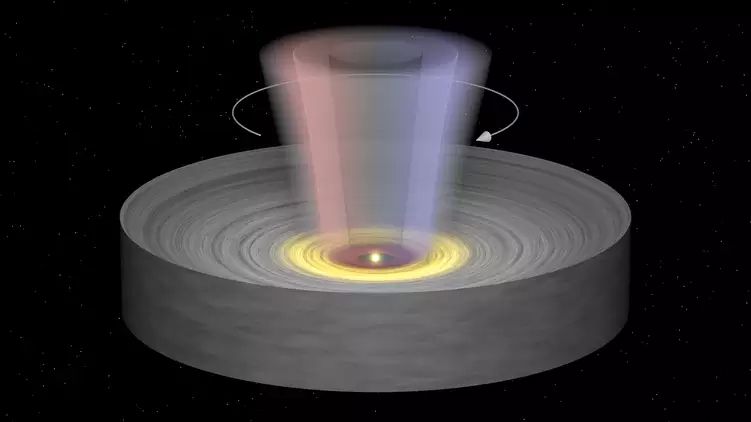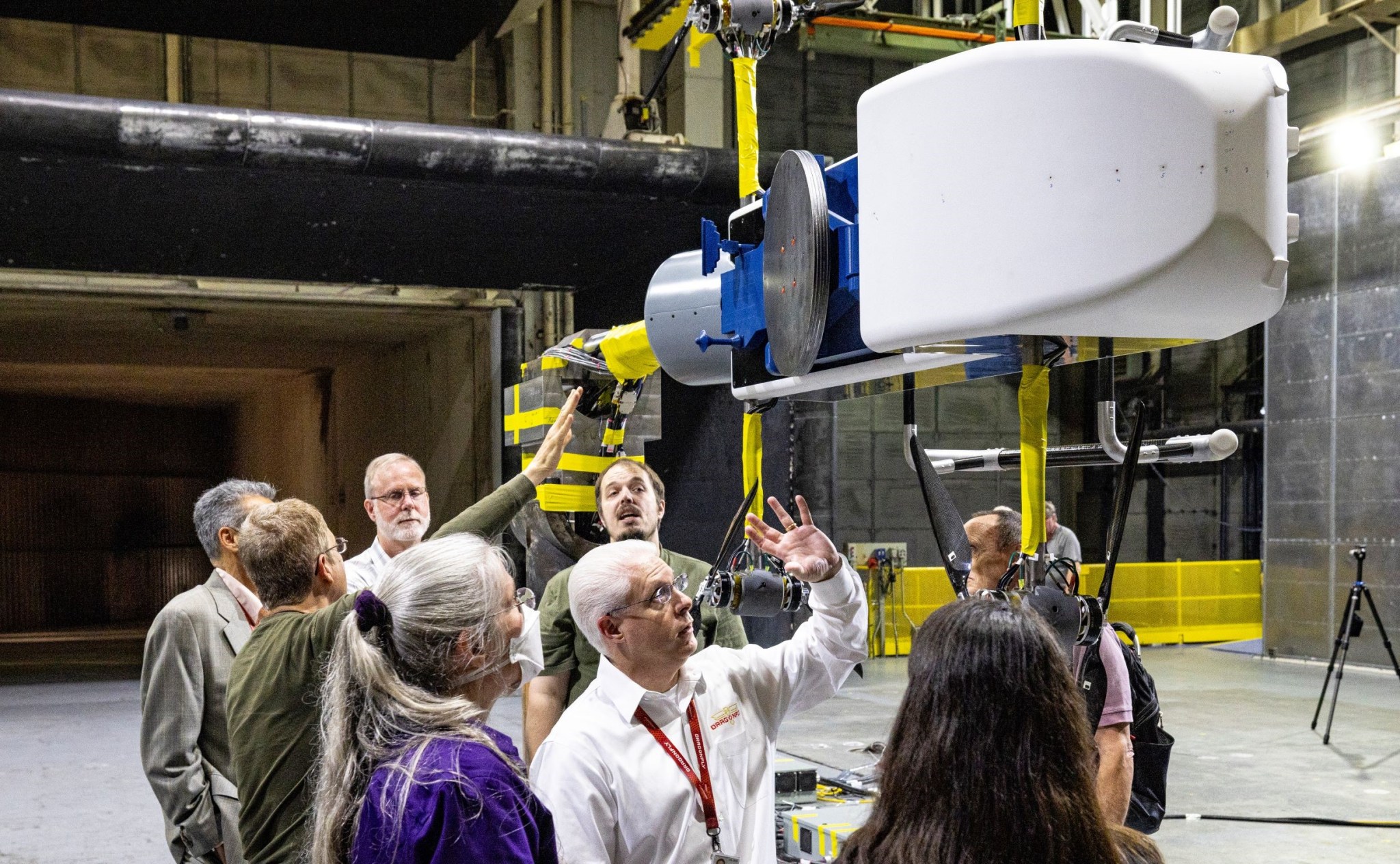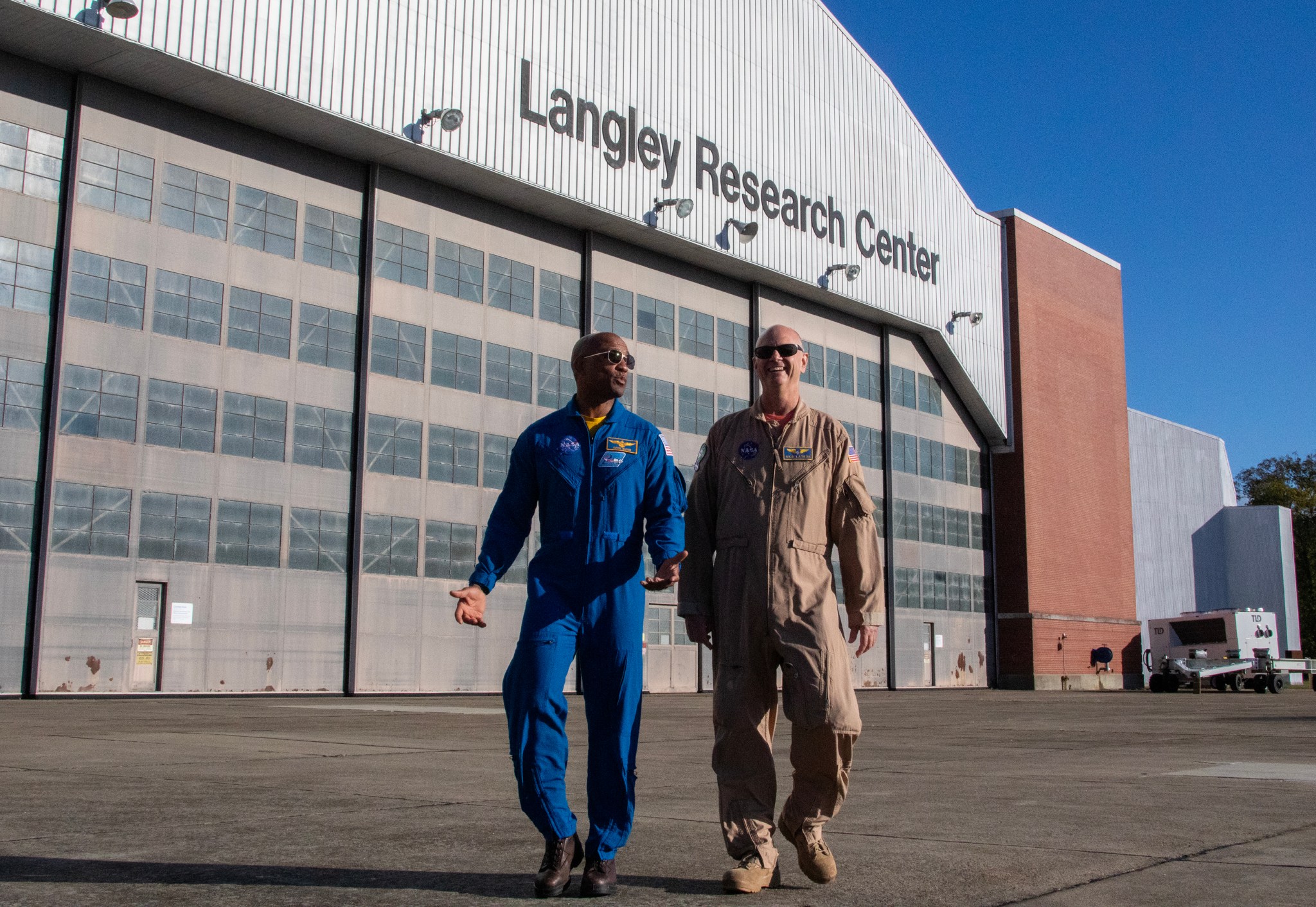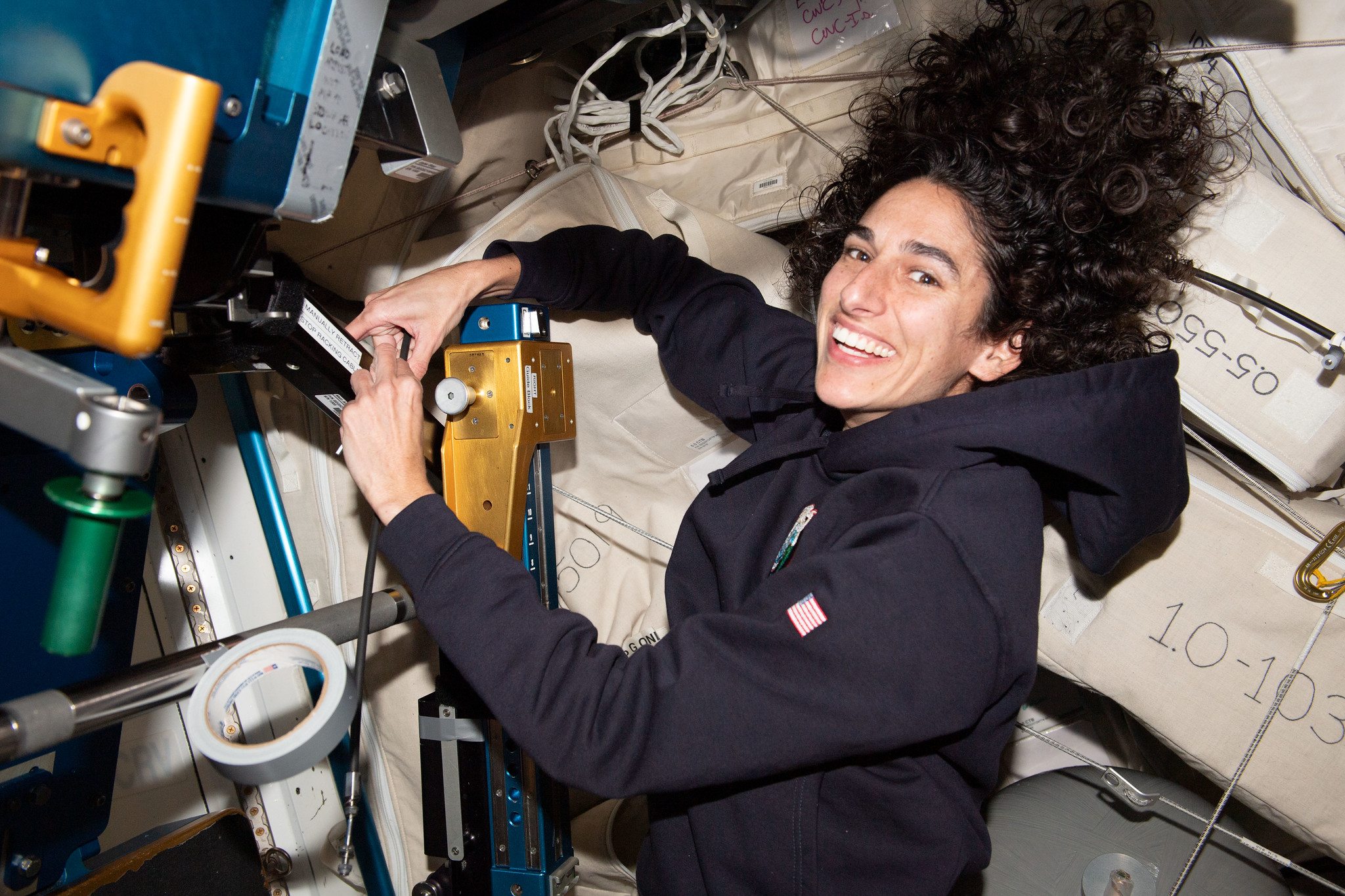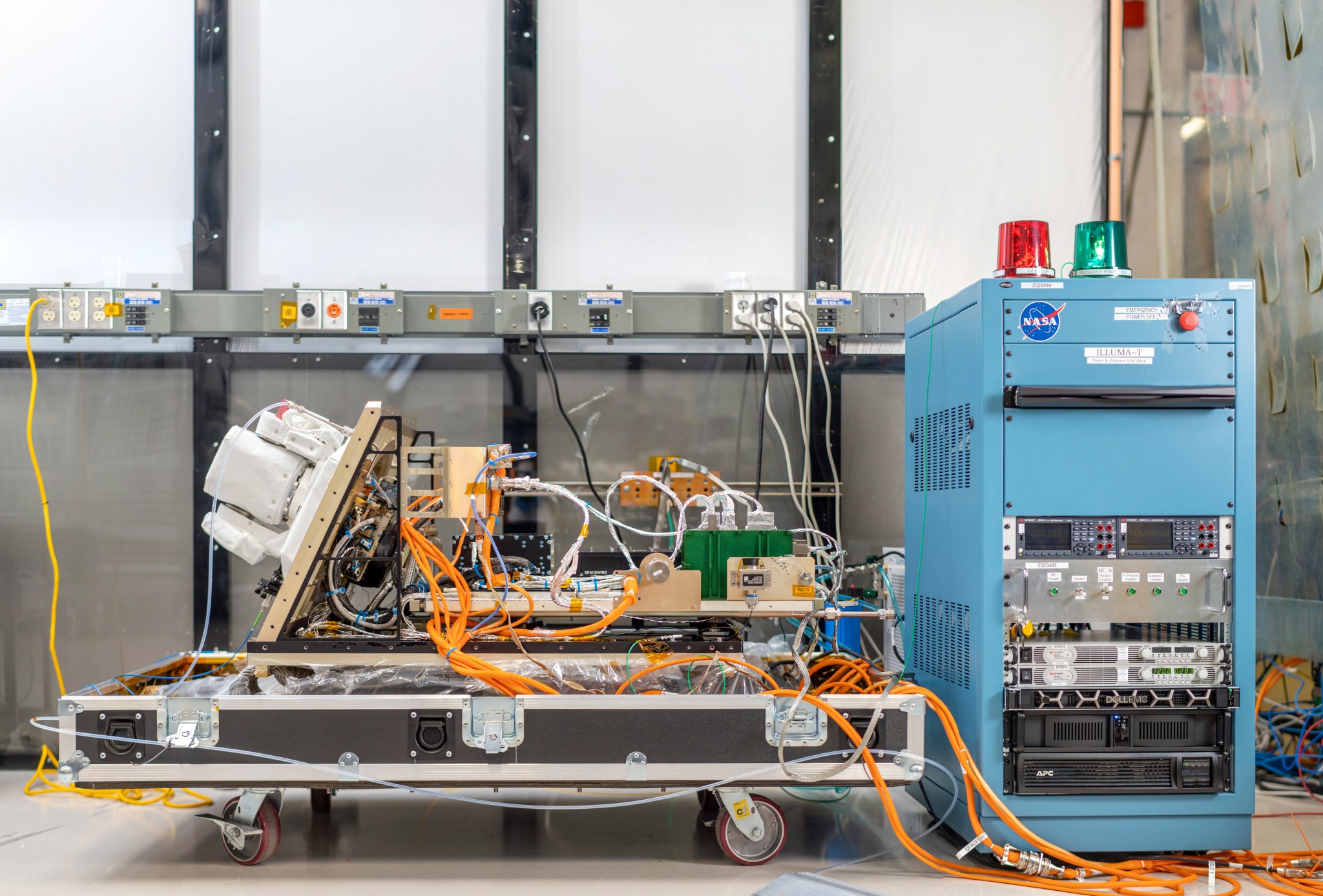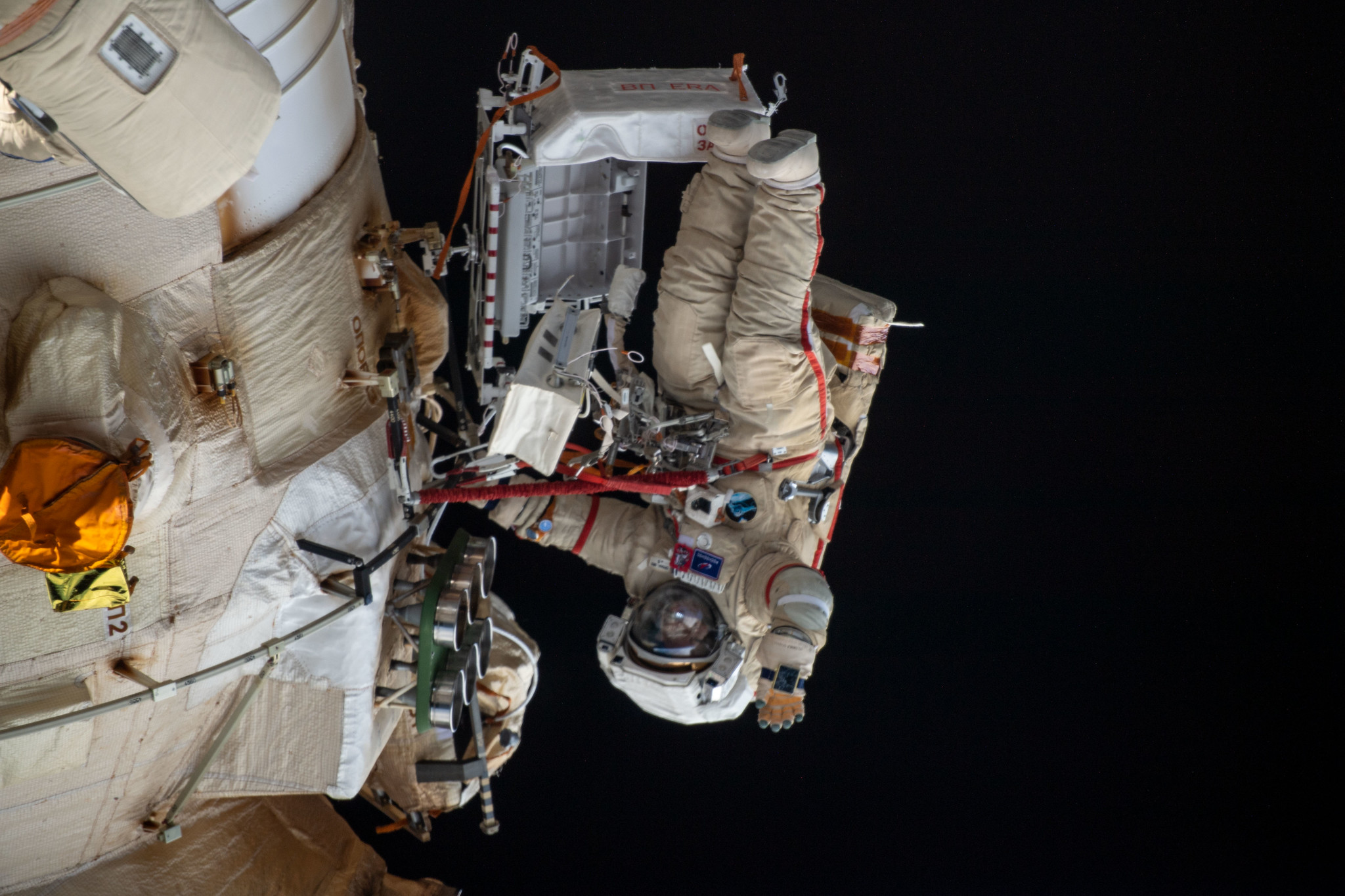Astronomers have discovered an important step in star formation, hitherto unknown, that could save infant stars from ripping themselves apart. The rescue mechanism is associated with “cosmic winds” that blow around clouds of gas and dust — and it’s these clouds that eventually collapse to form hot and dense stellar bodies. Plus, the clouds manage to slow these forming stars’ spins. A team of scientists, led by researchers from the Max Planck Institute for Astronomy arrived at this conclusion by making radio wave observations of a young star in a…
Read MoreMonth: October 2023
Dr. Natasha Schatzman Receives the Vertical Flight Society (VFS) 2023 Francois-Xavier Bagnoud Award
1 min read Dr. Natasha Schatzman Receives the Vertical Flight Society (VFS) 2023 Francois-Xavier Bagnoud Award Dr. Natasha Schatzman, NASA Ames Research Center NASA / Dominic Hart In May 2023, Dr. Natasha Schatzman received the Vertical Flight Society Francois-Xavier Bagnoud Award for her vertical flight research at NASA Ames Research Center. This annual award is given to a VFS member who is thirty-five years old or younger for outstanding contributions to vertical flight technology. The award announcement notes that Dr. Schatzman “was recognized for outstanding vertical lift research (internationally recognized…
Read MoreNASA’s Dragonfly Tunnel Visions
5 min read NASA’s Dragonfly Tunnel Visions Dragonfly Team Utilizes Unique NASA Facilities to Shape Its Innovative Titan-bound Rotorcraft Dragonfly team members review the half-scale lander model after it underwent wind tunnel testing at NASA Langley Research Center in Hampton, Virginia. Pictured are (from left) Art Azarbarzin, Juan Cruz, Wayne Dellinger, Zibi Turtle, Chuck Hebert, Ken Hibbard, Bernadine Juliano and Bruce Owens. Johns Hopkins APL/Ed Whitman With its dense atmosphere and low gravity, Saturn’s moon Titan is a great place to fly. But well before NASA’s Dragonfly rotorcraft lander soars…
Read MoreHow astronaut Thomas Pesquet captured the planet in ‘The Earth in Our Hands’
Flipping through his new book of more than 200 photographs of Earth, or, if you are determined, the more than 245,000 images he took during his second mission aboard the International Space Station, you get the sense that Thomas Pesquet thoroughly captured the planet. In “The Earth in Our Hands: Photos from the International Space Station,” Pesquet, a French astronaut with the European Space Agency (ESA), curates his favorite views of our home world, showcasing its varied landscapes of both natural and human-made features. With a familiarity that only an…
Read MoreNASA Test Piloting Legends Reunite
1 min read NASA Test Piloting Legends Reunite Former flight test instructor and current NASA test pilot Nils Larson reunited with former student and current astronaut Victor Glover on Oct. 21 during an open house at NASA’s Langley Research Center in Hampton, Virginia. NASA / Dave Bowman Nils Larson, aerospace engineer and test pilot for NASA’s X-59 aircraft, met up with his former student, Artemis II astronaut Victor Glover, on Saturday, Oct. 21 during an open house held at NASA’s Langley Research Center in Hampton, Virginia. The pilots originally met…
Read MoreNew York Students to Hear from Astronaut Aboard Space Station
NASA astronaut and Expedition 70 Flight Engineer Jasmin Moghbeli works with the Advanced Resistive Exercise Device, or ARED, removing and replacing cables. The device uses adjustable resistive mechanisms to provide crew members a weight load while exercising to maintain muscle strength and mass in microgravity. Students from Baldwin Union Free School District in Baldwin, New York, will have an opportunity this week to hear from an astronaut aboard the International Space Station. The Earth-to-space call will air live at 11 a.m. EDT Friday, Oct. 27, on NASA Television, the NASA app,…
Read MoreNASA’s SpaceX CRS-29 Mission Flies Research to the Space Station
The 29th SpaceX commercial resupply services (CRS) mission for NASA carries scientific experiments and technology demonstrations, including studies of enhanced optical communications and measurement of atmospheric waves. The uncrewed SpaceX Dragon spacecraft is scheduled to launch to the International Space Station from the agency’s Kennedy Space Center in Florida no earlier than Nov. 5. Download high-resolution photos and videos of the research mentioned in this article. Here are details on some of the research launching to the orbiting lab: Laser Communication from Space NASA’s ILLUMA-T investigation tests technology to provide…
Read MoreNASA Sets Coverage for Roscosmos Spacewalk Outside Space Station
(April 18, 2022) — Cosmonaut Oleg Artemyev waves to the camera while working outside the Nauka multipurpose laboratory module during a spacewalk that lasted for six hours and 37 minutes to outfit Nauka and configure the European robotic arm on the International Space Station’s Russian segment. NASA will provide live coverage as two Roscosmos cosmonauts conduct a spacewalk outside the International Space Station Wednesday, Oct. 25, to install communications hardware and inspect a portion of the orbital complex. Coverage begins at 1:45 p.m. EDT on NASA Television, the NASA…
Read MoreSpace Perspective unveils ‘Space Spa’ restroom for balloon tourist flights (images)
Space Perspective just unveiled the latest addition to its stratospheric tourism operation: a uniquely designed restroom, called the “Space Spa,” that will become part of its Spaceship Neptune capsule. Spaceship Neptune, which will be carried high into Earth’s atmosphere by a massive balloon, is a pressurized capsule that promises passengers a more luxurious and sedate experience than the suborbital rocket rides offered by Blue Origin and Virgin Galactic. Located within the eight-passenger capsule’s Space Lounge, the Space Spa will function as a personal retreat during Spaceship Neptune flights, company representatives…
Read MoreChina is building the world’s largest underwater telescope to hunt for elusive ‘ghost particles’
Scientists in China are building the world’s largest “ghost particle” detector 11,500 feet (3,500 meters) beneath the surface of the ocean. The Tropical Deep-sea Neutrino Telescope (TRIDENT) — called Hai ling or “Ocean Bell” in Chinese — will be anchored to the seabed of the Western Pacific Ocean. Upon completion in 2030, it will scan for rare flashes of light made by elusive particles as they briefly become tangible in the ocean depths. Every second, about 100 billion ghost particles, called neutrinos, pass through each square centimeter of your body.…
Read More